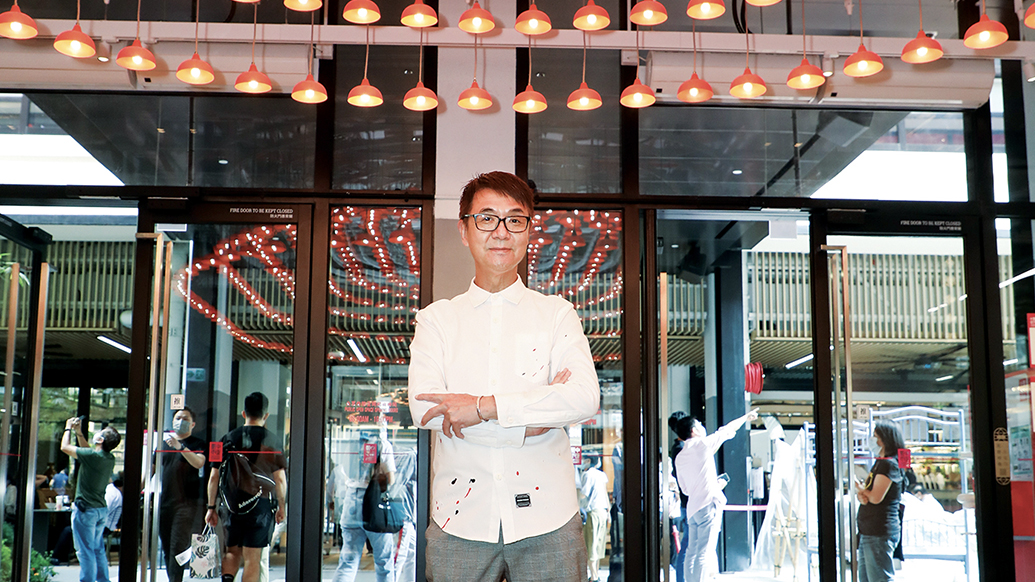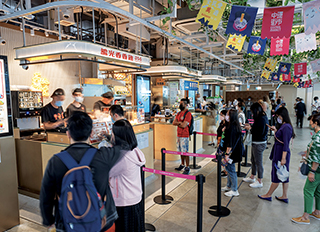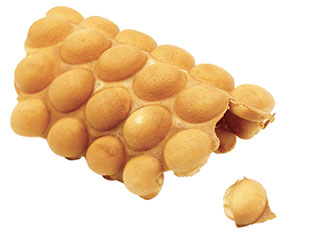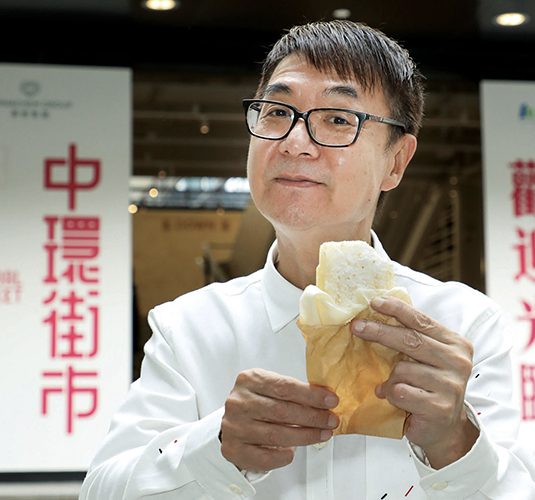Food columnist, Jacky, has been writing for various major newspaper and magazines for over 30 years. The media veteran masterminded and hosted TV and online food culture programmes including "Senior Cuisine", "Taste of Life" and "Cook Anytime", as well as Chef Dialogue at 2019 and 2020 Food Expo organised by the Hong Kong Trade Development Council. He is currently the host of RTHK 2 radio programme "Jacky's Club".
- 《LIFE+》Magazine
- 《LIFE+》Magazine Issue List
- 《LIFE+》 Magazine Issue 4
- Street Food's Long-Lasting Appeal
-
content 2
-
content 2
-
content 2
-
content 2
-
content 2
-
content 2
-
Street Food's Long-Lasting Appeal
29 November 2021Food columnist Jacky Chan has fond memories of street food, from steamed rice rolls, and egg waffles to “three fried stuffed treasures”, and candy and coconut wrap.
“These snacks were not gourmet food. Many were ordinary foods that southern Chinese people brought with them when they migrated to Hong Kong in the 1950s. They were new immigrants who brought their food culture to Hong Kong.”
At the time food hawkers didn’t need a license and so they would have a cart they pushed to various locations, particularly near schools in the mornings. Jacky remembers getting steamed rice rolls and added sauces like thinned peanut butter, sweetened soy and hoisin, eating them quickly for his breakfast for a few cents.
“It was something you could eat quickly in a few minutes and then go to school. In the winter you eat it and feel happy because you’d be warm,” he recalls with a smile. “The more expensive rice rolls would have dried shrimp, bits of meat or pork liver in them. The hawkers couldn’t hide their cooking technique from you -- they made the food right in front of you and that inspired me to learn how to cook.”
Other vendors offered curry fish balls, roasted sweet potatoes, and “three fried stuffed treasures”, which were slices of peppers, eggplants, and tofu stuffed with fish paste and pan-fried. Jacky says it could be quite dangerous having customers standing near carts with large woks full of bubbling oil.
Despite the dangers of the job, Jacky has heard some people liked being a food hawker, earning enough to make a decent living and when they were finished selling their food, they were done for the day.
However in the 1970s and 1980s, the government stopped issuing new hawker licenes because street food was not the best quality and cooking on street corners was not hygienic. While this resulted in a sharp decline in the number of mobile carts, some vendors turned to renting shop spaces to continue their trade. Today street food continues to thrive at Central Market, a newly revitalized landmark where visitors can revive their memories of eating these nostalgic snacks.
Jacky is also pleased to see the younger generation learning more about street food. “One time I was in Taikoo Shing and saw an elderly man selling candy and coconut wrap. A teenage boy asked a woman in her 60s what it was and she explained that it was a sweet snack she used to eat as a child. The teenager bought four pieces from the hawker, because wanted to support the hawker to inherit this culture and wanted to connect with his past generation via foods.”
 People can find local street food to try at Central Market
People can find local street food to try at Central Market Egg waffles are a quintessential Hong Kong street food
Egg waffles are a quintessential Hong Kong street food Steamed rice rolls that are savoury snacks on the go
Steamed rice rolls that are savoury snacks on the go
Jacky Chan
-
content 2
-
content 2
-
content 2
-
content 2
-
content 2
-
content 2
-
content 2
-
content 2
-
content 2
-
content 2
-
content 2
TABLE OF CONTENTS
- Spotlight
- Transformation
- Livelihood
- Neighbourhood
- Community
- Neighbourhood
- Taste
- Heritage
-
Happening
- NINA MALL Transforms into Finland Wonderland for Christmas9
- Celebrate the Festive Season with Lavish Christmas Offerings from Nina Hospitality10
- Lights Up for an Inclusive, Joyful Christmas11
- Chinachem Group Fully Supports the Venice Biennale of Architecture12
- Chinachem Group Wins the SDG Achievement Awards Hong Kong13
- Community
- Taste
- People
- Behind the Scenes
Page0of0
Stay in Touch with Us
We use cookies to enhance your experience. By continuing your visit, you consent to their use. To
find out more about how we use cookies, please see our privacy policy.